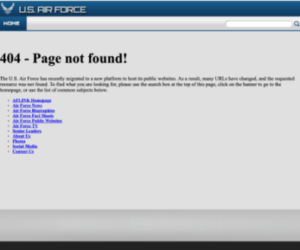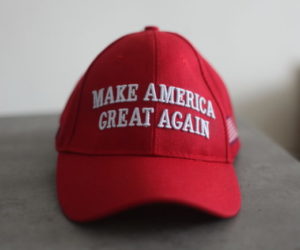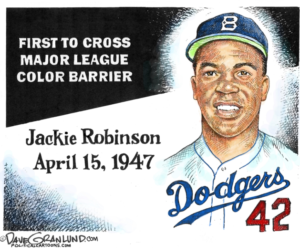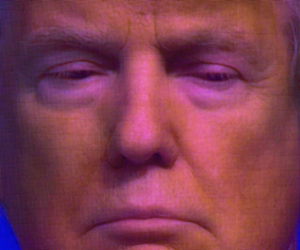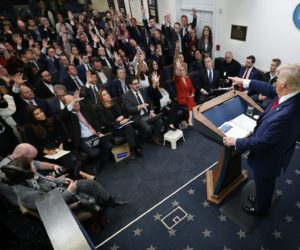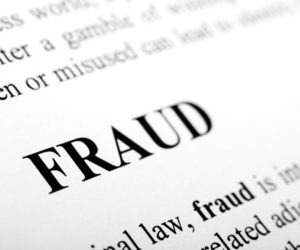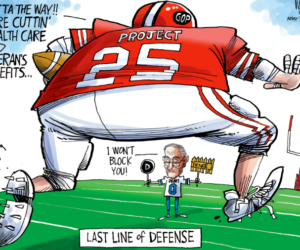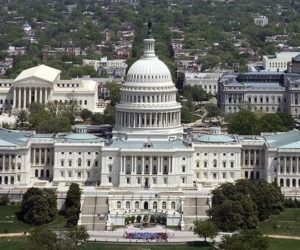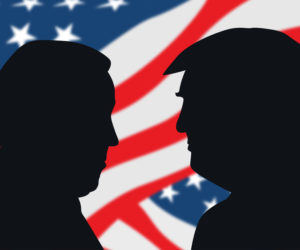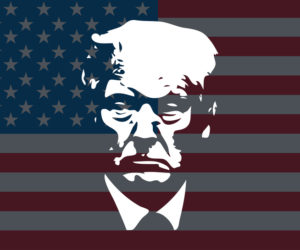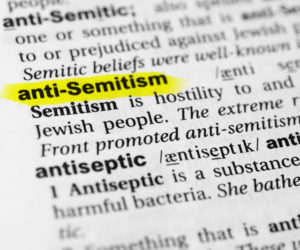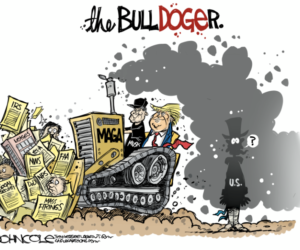
I think the government should not be in the business of selling liquor or controlling its wholesale distribution, and, as a general rule, I think government by initiative is a particularly poor form of lawmaking.
With those caveats, I’m going to describe, in English, the state of government-run retail liquor stores in the U.S. (you’ll be hard-pressed to find this anywhere else). I’m also going to dissect one of the claims made by the “vote no” campaign, that the CDC “recently came out against privatization because it leads to a 48 percent or more increase in problem drinking.” Really? Really?!?
Spoilers
According to the NIH, eight states have a “state-run” retail system for selling liquor. But the picture isn’t that black and white! In 19 states, governments control or monopolize distribution, which means that the public officials decide which brands are sold.
And about that claim from the “CDC”. Back in February, the Centers for Disease Control Community Guide Task Force — not the CDC but a CDC-appointed task force (that’s a very big demerit for the claim) — recommended against further privatization of liquor sales. In addition, the task force presented this formidable looking assessment:
The Task Force finding includes evidence from 21 studies that assessed the impact of privatizing alcohol sales on per capita consumption of the privatized beverage… Following privatization, consumption of privatized beverages increased substantially (median relative increase of 48.2%; interquartile interval [IQI]: 0.0% to 136.7%) … resulting in substantial net increases in per capita alcohol consumption.
Wow. That sounds … downright horrifying, doesn’t it? Privatize the sale of alcohol, and we turn into alcoholics?
There’s just one problem. Well, there’s more than one. But the big one is that nothing (that I can find) on this Community Guide web page that came to the top in a Google search links to the analysis. Or the list of 21 studies. You know, nothing to provide evidence for the claim.
Oh. And another problem. Most of the privatization has already happened, because the research on which this claim was made was based on privatizing retail sales, not wholesale sales.
What Are The States That Sell Liquor?
The initiative would take Washington state out of both the distribution and retail sales business. According to the National Alcohol Beverage Control Association (NABCA), 18 states — plus two counties in Maryland — control or monopolize the sale of liquor at the wholesale level.
Washington state buys liquor from the source (or its representative), manages a central distribution warehouse, and sells liquor (and wine) in both state-run and contract liquor stores. Most of the public angst about I-1183 relates to retail sales, although the primary money behind the “vote no” campaign is from distributors, the middlemen in this deal:
“Wine & Spirits Wholesalers of America has contributed $5.8 million of the $7.4 million that’s been raised to oppose I-1183,” according to the Seattle Times. Also noted: the National Beer Wholesalers Association has donated $500,000 to defeat the measure. Why the opposition? “I-1183 would make Washington one of the few states, and possibly the only one, to allow retailers to buy liquor directly from distilleries. That means they could bypass distributors altogether.”
But the wholesale war isn’t emotional.
So the focus of ads and oppositional rhetoric is retail sales, although these are two different critters. According to NIH, there are only eight states where the government runs the retail sales of alcohol. But eight is an overstatement, as Oregon doesn’t operate its stores, although it owns the liquor sold there; neither does Vermont.
Even Washington has a mix of state-operated and state-contracted stores. And to demonstrate that increasing sales is part of its mission, check out this year-long spirits tasting pilot in Washington, where “customers can now enhance their product knowledge by trying something they may never have considered before and learn first-hand about the products from distillers’ representatives.”

- Alabama – population 4.7 million; operates about 170 state liquor stores
- Montana – population 1 million; operates 97 agency liquor stores
- North Carolina – population 9.4 million; 167 local ABC systems operate 422 retail stores
- Oregon – population 3.8 million; does not operate state retail stores but owns the liquor that is sold in the 246 stores
- Pennsylvania – population 12.6 million; PLCB operates approximately 610 stores
- Utah – population 2.8 million; operates retail stores; one store permitted for every 48,000 citizens
- Vermont – population 622,000; 70 contracted liquor agencies around the state, includes grocery stores and pharmacies.
- Washington – population 7.6 million; operates 166 state liquor stores and has 163 contract liquor stores
Total U.S. population where liquor stores are managed by the state: 42.5 million
Percentage of the U.S. population this represents: 13.8%
What was that about “privatization” being bad? Looks like that horse has left the stable.
What Was That “CDC” Study?
The February 2011 Community Guide — reminder: not the CDC as claimed — argued against privatization of alcohol sales. Here’s the official disclaimer: “The findings and conclusions on this page are those of the Task Force on Community Preventive Services and do not necessarily represent those of CDC.”
The task force performed a meta analysis of research on alcohol consumption from the 1960s into the 1990s. Most of the research was focused on wine or beer consumption. Almost every research study that showed an increase in consumption when sales were privatized was countered by one that said that there was no effect; this was most apparent in research focused on Iowa (four of the 12 published reports dealt only with Iowa; a fifth included it in a meta-analysis).
There’s a reason that researchers focused on Iowa. In 1987, Iowa ended its prohibition-era laws controlling alcohol sales, making it the first state to, according to Mulford, Ledolter and Fitzgerald (1990), “[eliminate] its state retail monopoly of distilled spirits sales for off-premise consumption.” In this 1990 study, the authors reported that:
… controlling for nationwide sales trends over the past two decades, [we] identified a statistically significant 9.5% increase in spirits sales following the policy change. While there was a corresponding 13.7% decline in wine sales, and no change in beer sales, privatization of spirits retail sales yielded a net increase in total alcohol consumption in Iowa.
Although a 9.5% increase is a far cry from the “median relative increase of 48.2%” there’s a teensy weensy problem. Two years later the same set of authors reported:
Time series analyses of monthly sales (apparent consumption) trends showed that the increased availability had no lasting impact on consumption.
Surprise, surprise. The novelty effect temporarily boosted sales. Quite possibly that was because there were new, to Iowans, spirits for sale. Thus this research by the same authors suggests no change in consumption due to privatization.
Moreover, the most thorough examination of data over time (1950-2000), determined that “Privatization had a significant permanent effect on the sale of spirits, but the effect was not large enough to affect total sales” and “There was no significant effect on the number of fatal motor vehicle traffic accidents.”
How did the task force get to a 50% increase in consumption?
They don’t tell us.
But here’s the list of studies, courtesy of a press release from a Pennsylvania analysis, linked to by Freakonomics.
The page lists 12 papers under “included studies”. Four of the papers relate specifically to Iowa; the net result: no increase in consumption. Emphasis and notes are mine, as is the clumping of research.
Journals cited
- Addiction. 2002 (data 1968-69), 2005 (data 1950-2000)
- Alcoholism-Clinical and Experimental Research : 2005 (data 1978-1984)
- British Journal of Addiction : 1986, 1988, 1990, 1992
- Journal of Studies on Alcohol : 1986, 1991, 1992, 1995
Notice anything in this list? Yeah, basically there is no recent research.
Iowa
- Fitzgerald JL, Mulford HA. Consequences of increasing alcohol availability – the Iowa experience revisited. British Journal of Addiction 1992; 87(2):267-74. [Note from abstract: “Neither previous sales analyses nor this survey data analysis support the Distribution of Consumption Prevention Model (cited by the task force) prediction that increased wine and spirits availability would produce significant and lasting consumption increases and, in turn, heavy drinker and problem drinker prevalence rate increases.”]
- Holder HD, Wagenaar AC. Effects of the elimination of a state monopoly on distilled spirits’ retail sales: a time-series analysis of Iowa. British Journal of Addiction 1990; 85(12):1615-25. [Note: conclusion about increase in consumption refuted by 1992 study.]
- Mulford HA, Fitzgerald JL. Consequences of increasing off-premise wine outlets in Iowa. British Journal of Addiction 1988; 83(11):1271-9. [Note: immediately after the change in law; the followup research showed no sustained increase in consumption.]
- Mulford HA, Ledolter J, Fitzgerald JL. Alcohol availability and consumption: Iowa sales data revisited. Journal of Studies on Alcohol 1992; 53(5):487-94. [Note: After 1987 privitization: “Time series analyses of monthly sales (apparent consumption) trends showed that the increased availability had no lasting impact on consumption.”]
Wine-Only : not relevant to Washington as wine is already available in grocery stores
- Macdonald S. The impact of increased availability of wine in grocery stores on consumption: four case histories. British Journal of Addiction 1986; 81:381-7. [Note: From the abstract, “In three of four states, wine consumption was found to be significantly greater in the years of the changes than one would expect, based on the regression trends of the previous eight to thirteen years.” Note that this was the same case in Iowa but it was not sustained over time; where is the time series analysis post “year of change”?]
- Smart RG. The impact on consumption of selling wine in grocery stores. Journal of Studies on Alcohol 1986; 21(3):233-6. [Note from the abstract: “The analyses show that there was no impact on wine sales or total alcohol sales from the introduction of wine into grocery stores.”]
- Wagenaar AC, Holder HD. A change from public to private sale of wine: results from natural experiments in Iowa and West Virginia. Journal of Studies on Alcohol 1991; 52(2):162-73. [Note from the abstract: “Privatization was associated with statistically significant increases in wine sales in Iowa and West Virginia… In addition, there was a net increase in absolute alcohol consumed in both states across all beverages (beer, wine and distilled spirits) associated with privatization.” The results from this study contradict the results from Mulford et al.]
- Trolldal B. The privatization of wine sales in Quebec in 1978 and 1983 to 1984. Alcoholism-Clinical and Experimental Research 2005; 29(3):410-6. [Note from abstract: “The sale of wine increased by 10%, but the effect was not so large as to affect total sales. Sales of spirits and beer were not significantly affected. In 1983 to 1984, no immediate significant increase in sales of wine was found.”]
- Wagenaar AC, Holder HD. Changes in alcohol consumption resulting from the elimination of retail wine monopolies: results from five U.S. states. Journal of Studies on Alcohol 1995; 56(5):566-72. [Note from abstract: “The structure of the retail alcohol distribution system has a significant effect on alcohol sales. We recommend that the social costs associated with increased alcohol use be carefully considered before such major policy changes are contemplated.” The research period was 1968-1991; although one would hope the results were presented in a per capita manner, given the 2.5 decade period, the abstract presents results only in absolute percentage increases.]
Finland, Sweden (beer), Canada
- Mäkelä P. Whose drinking does the liberalization of alcohol policy increase? Change in alcohol consumption by the initial level in the Finnish panel survey in 1968 and 1969. Addiction 2002; 97(6):701-6. [Note: from the abstract, in 1968 and 1969 in Finland, per capita consumption increased by 46% in one year. Might this be the bulk of the increase in consumption alluded to in the Community Guide? Note that this 40+ years ago, there is no time series analysis and social mores around drinking have changed considerably in 40 years. Plus, this is Finland. ]
- Ramstedt M. The repeal of medium-strength beer in grocery stores in Sweden—the impact on alcohol-related hospitalizations in different age groups (pdf) [local pdf]. Finland: Nordic Council for Alcohol and Drug Research (NAD), 2002. No. 42. [From the study: “AAA-diagnoses (alcoholism, alcohol psychosis and alcohol intoxication) declined significantly only among young people after medium-strength beer was removed, whereas motor vehicle accidents declined significantly also in two of the older age groups. This suggests that removing medium-strength beer from grocery stores was associated with fewer alcohol-related problems not only among teenagers but also among older segments of the population.”]
- Trolldal B. An investigation of the effect of privatization of retail sales of alcohol on consumption and traffic accidents in Alberta, Canada. Addiction 2005; 100(5):662-71. [Note from lit review: “From 1993 to 1994, Alberta privatized all of its retail liquor stores resulting inan almost tripling of the number of retail outlets selling wine or spirits. Controlling for changes in after-tax income and alcohol prices, Trolldal finds that sales of spirits increased following privatization, that sales of beer and wine were unchanged, that the change in total sales of alcohol were insignificant, and that privatization had no significant effect on vehicle fatalities… Trolldal also notes that total sales did not increase despite an increase in the number of retail outlets.”]
My review was cursory — I read abstracts, in the main. But the conclusion in this literature review of privatization studies (more than the 12 listed in the Task Force assessment) by economist Antony Davies echoes my initial reaction and begs the question, how did the CDC-appointed task force reach its conclusion (emphasis added)?
These and other studies suggest that there is no clear evidence that privatization of alcohol markets leads to decreased social measures – whether consumption, underage drinking, or DUI fatalities. Studies that show relationships are counterbalanced by other studies, of the same data, that show no relationship. Some studies that show relationships may suffer from unaddressed statistical anomalies that bias results in favor of finding relationships where noneexist. Studies that show relationships also suffer from unaddressed causality, making the results useless for guiding policy makers.
The task force conclusion is troubling, given that it was cited by the Tacoma News Tribune as a primary reason for opposing the initiative.
Pick Your Corporate Team
By choosing to vote on this measure, Washingtonians are implicitly picking a corporate team. Those on the opposition are supporting the existing beer and wine distributors, whose businesses would see additional competition should the measure pass. Those supporting the bill are endorsing the state’s major businesses — Chambers of Commerce, the Washington Restaurant Association — but the bulk of the funding comes from Costco.
I’ve almost convinced myself to vote yes, because I am convinced that a “no” vote will mean that this issue would be dead forever. And clearly the legislature is unwilling to dismantle any part of the system, or it would have already done so.
For more reading
- Yes on I-1183
- No on I-1183
- Washington Policy Center on I-1183
- Liquor Privatization Literature Review
Known for gnawing at complex questions like a terrier with a bone. Digital evangelist, writer, teacher. Transplanted Southerner; teach newbies to ride motorcycles. @kegill (Twitter and Mastodon.social); wiredpen.com

